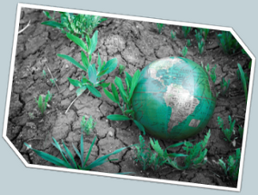Bringing the Outside In: Call for Case Studies
Enriching Student Learning through Environmental Engagement |
|
|
As part of our Education for Sustainable Development programme, the History at the Higher Education Academy, in association with the English Subject Centre and PALANTINE, is launching two initiatives to encourage students and lecturers to engage with the environment beyond the classroom. We want to motivate staff and students whose teaching and learning takes place primarily indoors to go out and experience the places that form the context for the subject of study in order to enrich both academic learning and environmental awareness. To this end, the Subject Centre is offering a pedagogical grant of £150 for case studies describing how taking students off-campus on field-trips or visits can enhance their learning and increase their environmental awareness. Perhaps you have taken students on a walk through a surviving medieval street plan? Or let them explore Victorian architecture and working conditions by visiting historical industrial centres. Case studies will be published on the History Subject Centre website and may also be published on the websites of collaborating Subject Centres. |
|
Case studies (1,500 words) should be set out as follows:1. Title of the case study 2. Name(s) of author(s), with institutional affiliation(s) and contact details. 3. A one-paragraph summary of the case study. 4. Background/Context. In this section, you should describe the situation which gave rise to the activities described in the case study, mentioning any factors (e.g. academic, institutional, departmental, personal) which seem relevant. What was your motivation for organising the field-trip? 5. Activities/Practice This section should contain an account of the activity focused on in the case study. If you are writing about a field trip, then you should be clear about how it was related to the rest of the curriculum and the anticipated pedagogical benefits. Where possible, we would like case studies to include sample quotations from students. 6. Conclusions This section provides you with an opportunity to reflect on the success (and/or failure) of the work described in section 5. As well as considering benefits (and perhaps problems) for both students and staff, you should try to suggest ways in which your work might be applied by lecturers working in different humanities subjects. How would you improve the field trip the next time around? You should also describe how the activity enhanced the more formal part of the curriculum, and how students’ environmental awareness was enhanced. If possible, include examples of how the students’ enhanced environmental awareness was evidenced in assessed work. 7. Bibliographical References (if any), including Web links 8. Photographs to accompany the case study. Before starting to write we recommend that you contact Melodee Beals (m.beals@warwick.ac.uk) to ensure that your idea for a case study fits with our initiative and that funding is still available; we have funding for a limited number of case studies. To be eligible for payment, you should be a lecturer on a higher education programme in a UK institution. |
|
|
The closing date for case studies is Friday 26th November, but we are happy to accept case studies before this date. For case studies accepted for publication payments of £150 will be made:
|
|
If you have any further questions, please contact Melodee Beals at m.beals@warwick.ac.uk |
|
